The 250th Anniversary of the American Revolution
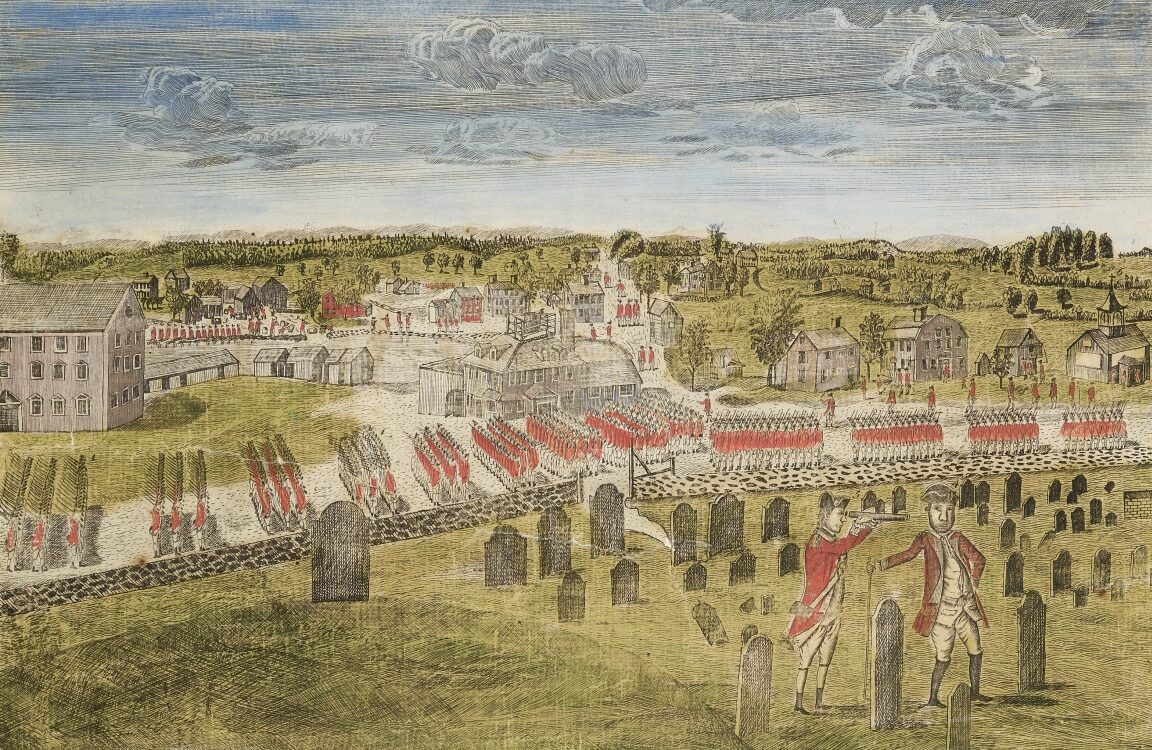
Explore Mount Auburn’s Revolutionary past.
A Distinctly American Landscape
Mount Auburn's landscape has long functioned as a living portrait of American identity. In designing curving roads through forests and gardens, the founders created a “rural cemetery” where nature and memory merged. By opening to the public, Mount Auburn became a place for all citizens to gather and reflect. “Almost immediately, the cemetery became a destination for tourists and for Bostonians looking for a pleasant day out”(neh.gov) – a new kind of civic park before Boston had any public park or museum.
This was no coincidence: from its very consecration in 1831, civic-leaders cast Mount Auburn as a pantheon of the new republic’s values and material aesthetics. The graves and memorials here honored not just individuals, but the ideals of a new democratic nation. The greco‑roman neoclassical influence in the landscape is ubiquitous. Through marble obelisks, temple‑like mausoleums, and classically inspired statuary, cemetery designers and individual families evoked the democratic ideals of ancient Greece and the republican virtues of Rome—models young Americans looked to when forging their own national identity (lalh.org). In effect, these landscaped acres filled the void of national symbolism.

Mount Auburn’s Washington Tower (completed 1854) dramatized the new republic’s desire for national symbols. Erected on the highest hill as “a cenotaph…in honor of President George Washington”, the 62-foot granite tower provided one of America’s first public monuments to a Founding Father. Design-wise it mimicked a medieval keepsake – Mount Auburn founder, Jacob Bigelow’s “feudal” round tower – yet borrowing from European design, its purpose in commemoration was distinctly American. In a young nation with few federal memorials, placing Washington Tower atop Mount Auburn both literally and figuratively linked the Revolution’s heritage to the living landscape.
As one historian notes, Mount Auburn’s monuments “remind us that before monuments and war memorials were placed in public parks, they were more commonly seen in graveyards and cemeteries”(neh.gov). In that civic role, Washington Tower gave visitors a focal point for patriotic reflection, realizing Mount Auburn's first President, Joseph Story’s vision of a cemetery “erect[ing] the memorials of our love… and our glory” for those “who have died in the cause of their country”.
Now, as we approach the 250th anniversary of the American Revolution, Mount Auburn’s early history takes on new resonance. The cemetery shows how Americans once wove the Revolution’s memory directly into their landscape. Here the leaders of 19th-century Boston literally broke ground on a “new American landscape” – carving stone gateways, towers, and monuments where none had stood. Every path and memorial became a symbol, every view a lesson in civic heritage.
The Boston Tea Party

On December 16, 1773, a small band of colonists—later immortalized as the “Sons of Liberty”—boldly protested British taxation by dumping tea into Boston Harbor.
Two centuries later, as part of the 250th‑anniversary of that act of defiance, the Boston Tea Party Ships & Museum’s Grave Marker Program placed commemorative markers at their gravesites. By highlighting these patriots, we honor both their bold action and the enduring power of civic engagement.
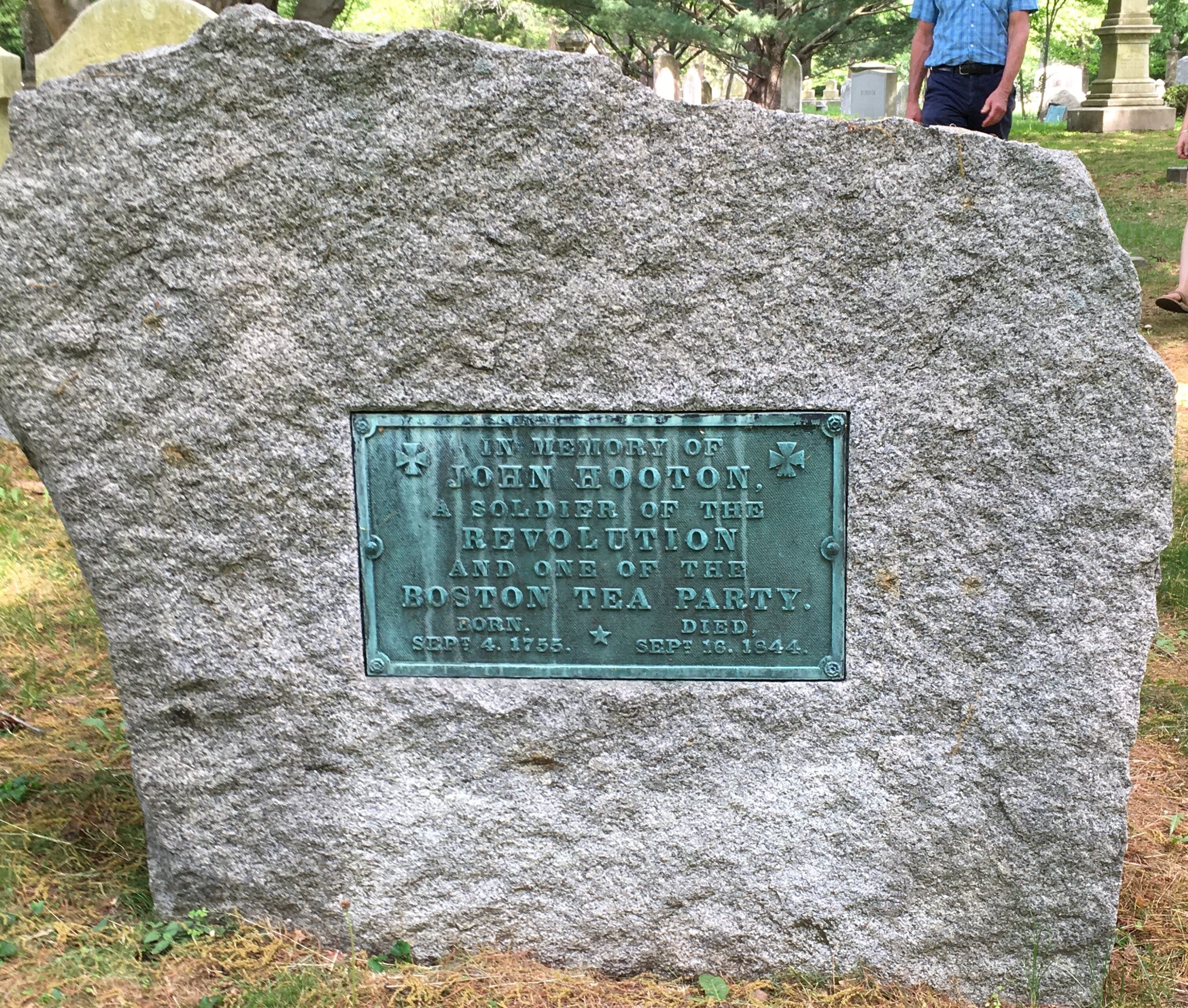
John Hooton (1755-1844)
John Hooton, an oar-maker, was born September 4th, 1754 in Boston, Massachusetts. He was a Boston Tea Party participant and Revolutionary militiaman.
He was placed on the enlistment list for service as a private and sergeant in the Massachusetts Militia. He served as a sergeant in Captain Elias Parkman’s company and in Colonel Joseph Webb’s regiment.
He died September 15th, 1844 and is buried in Lot 254 on Cedar Ave.
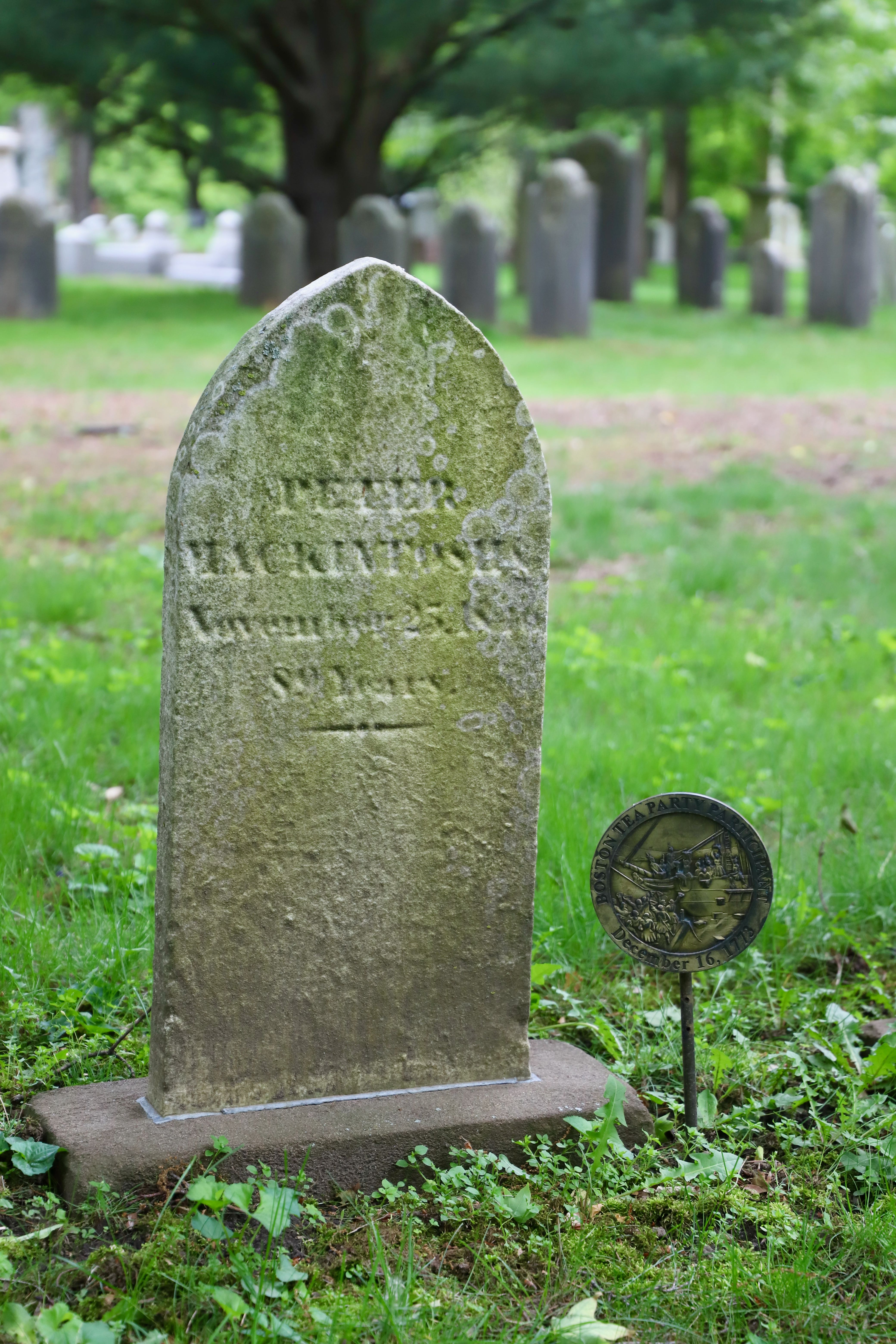
Peter MacKintosch (1757-1846)
Peter was 16 years old when he participated in the Boston Tea Party of 1773.
Because he was a blacksmith, he enlisted in the Continental Army in 1775 as an “artificer,” responsible for shoeing horses, repairing cannons and generally keeping military equipment in working order. He also served as an artillery soldier.
He is buried in Lot 1123 on Ailanthus Path.
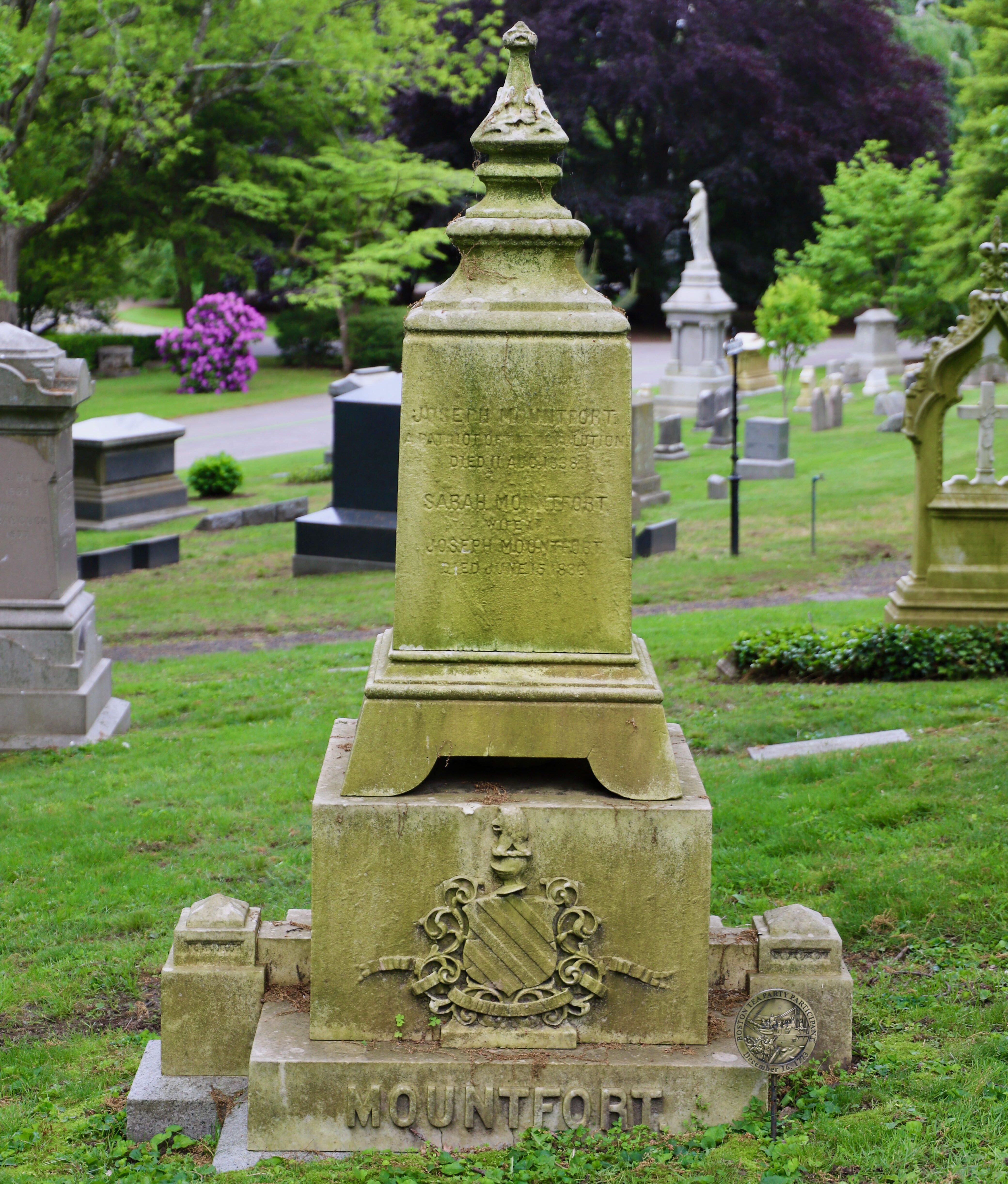
Lt. Joseph Mountfort (ca.1750-1838)
Mountfort was a cooper by trade and, according to his son George, a “zealous patriot.” He was 23 years old when he participated in the Boston Tea Party.
He served about 18 months at sea during the Revolution and was taken prisoner three times. Once, imprisoned in Plymouth, England, he executed an escape, crossed the English Channel to France in an open boat, and returned to Boston.
He is buried in Lot 4923 on Raven Path.
Self-Determination
From the earliest skirmishes of the Revolution at Concord and Cambridge to the decisive clash at Yorktown, these individuals asserted their agency in forging a new nation. Some were mere teenagers when they enlisted, choosing paths that would test their courage, shape their futures, and leave lasting legacies—whether at the anvil of a blacksmith’s forge, aboard a Continental frigate, or carrying critical dispatches. Their stories remind us that the Revolution was as much about individual resolve as collective struggle.
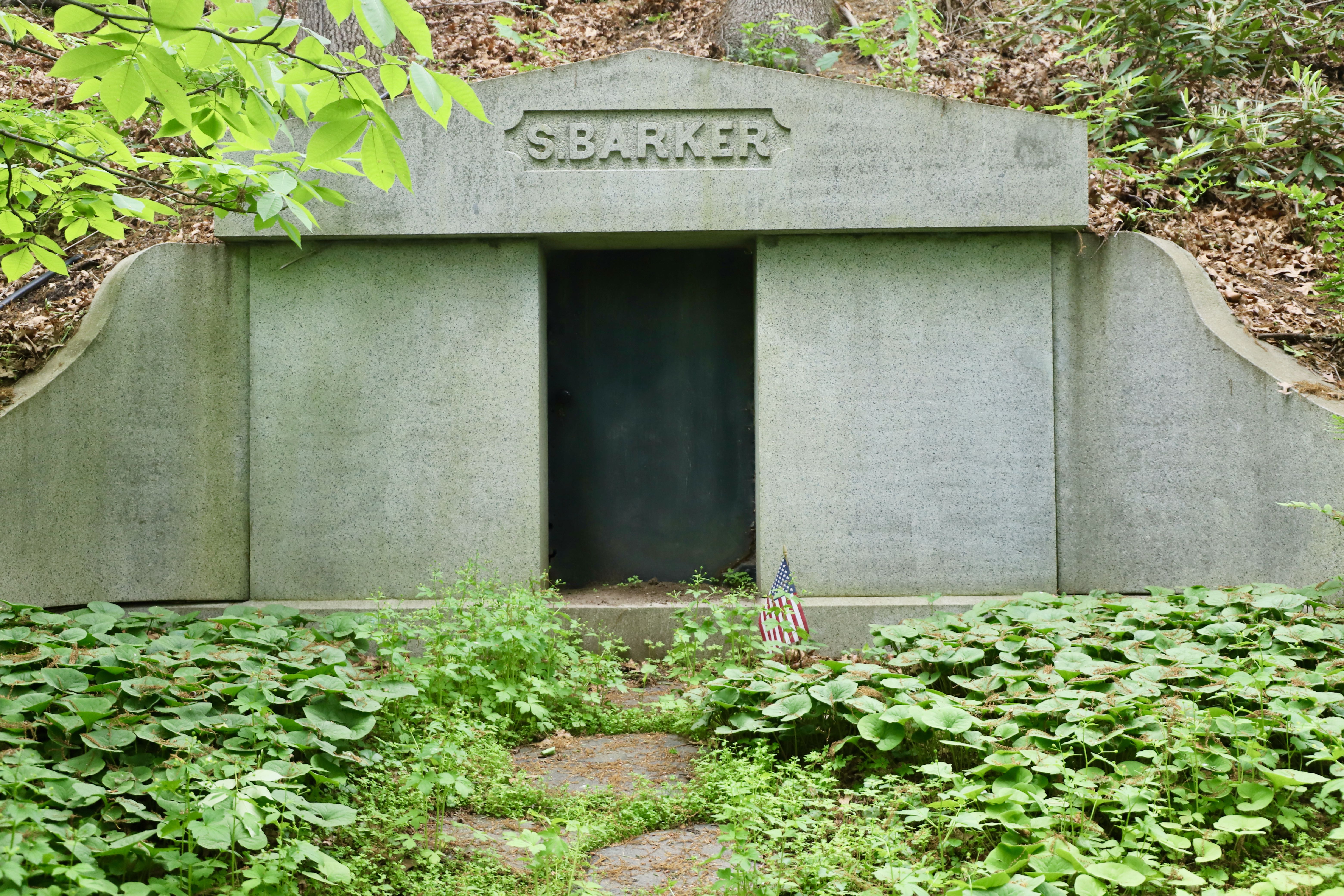
Josiah B. Barker (1763-1843)
Barker enlisted in the army the tender age of 13, and served as a private in several Massachusetts Militia companies until 1781. Thereafter he served on the frigate “Hauge” and “Dean” in the West Indies.
He became a shipbuilder, after the war opening his own shipbuilding yard in Charlestown in 1795. He built merchant vessels, Naval fighting ships, and, also rebuilt the U.S.S. Constitution. He later was appointed United States Naval Constructor, building several more naval ships between 1818 and 1842.
He is buried in Lot 226 on Sumac Path.
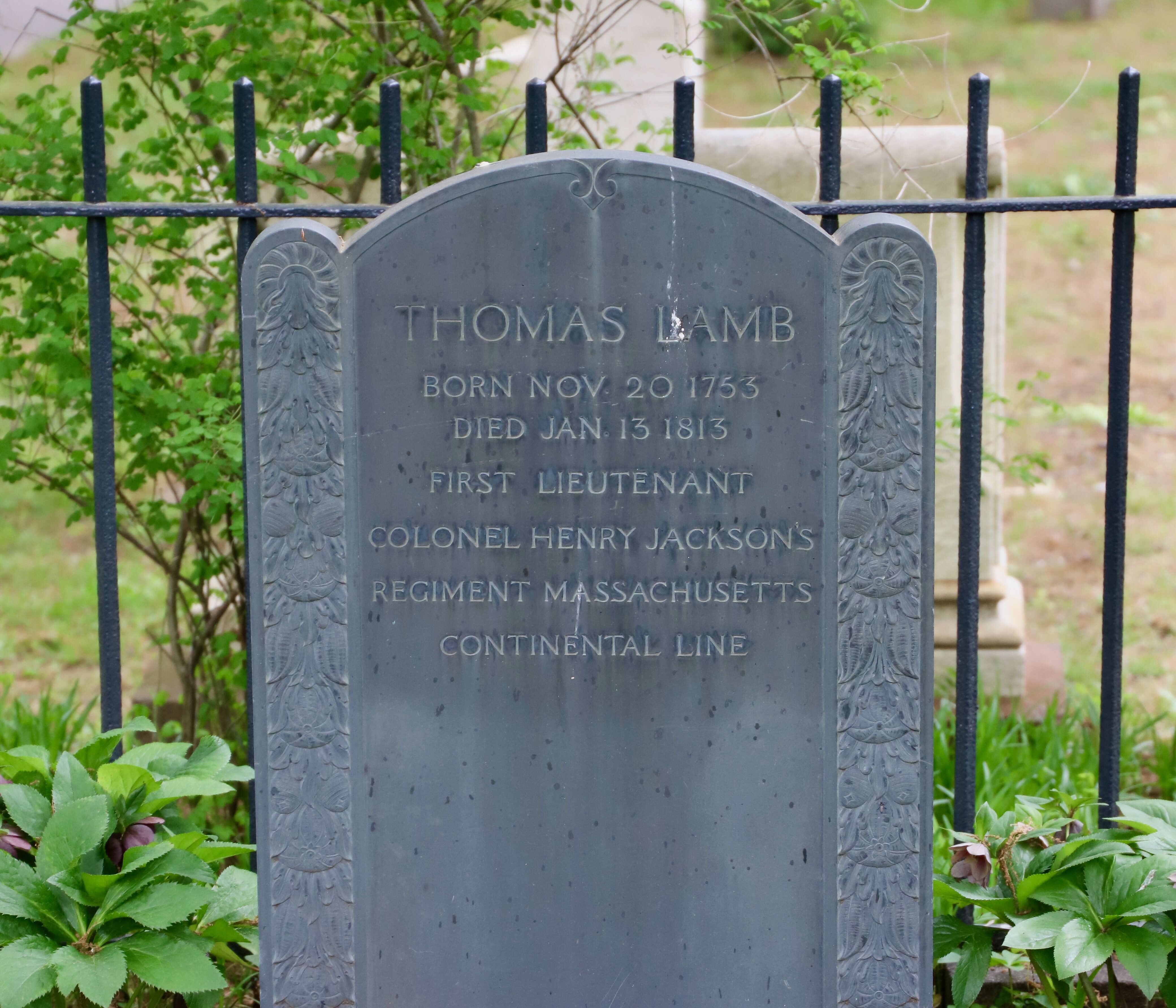
Lt. Thomas Lamb (1753-1813)
Lamb served with the Massachusetts 16th Regiment. While at Valley Forge, he was chosen by Gen. Washington to “carry a message from Valley Forge to Boston asking for supplies for the army.” After the war he and his brother James became shipping merchants in Boston.
Originally interred in the Boston Central Ground tomb of Francis Wright, Lamb was removed to Mount Auburn in 1837 along with members of the Wright family.
He is buried in Lot 591 on Cypress Ave.
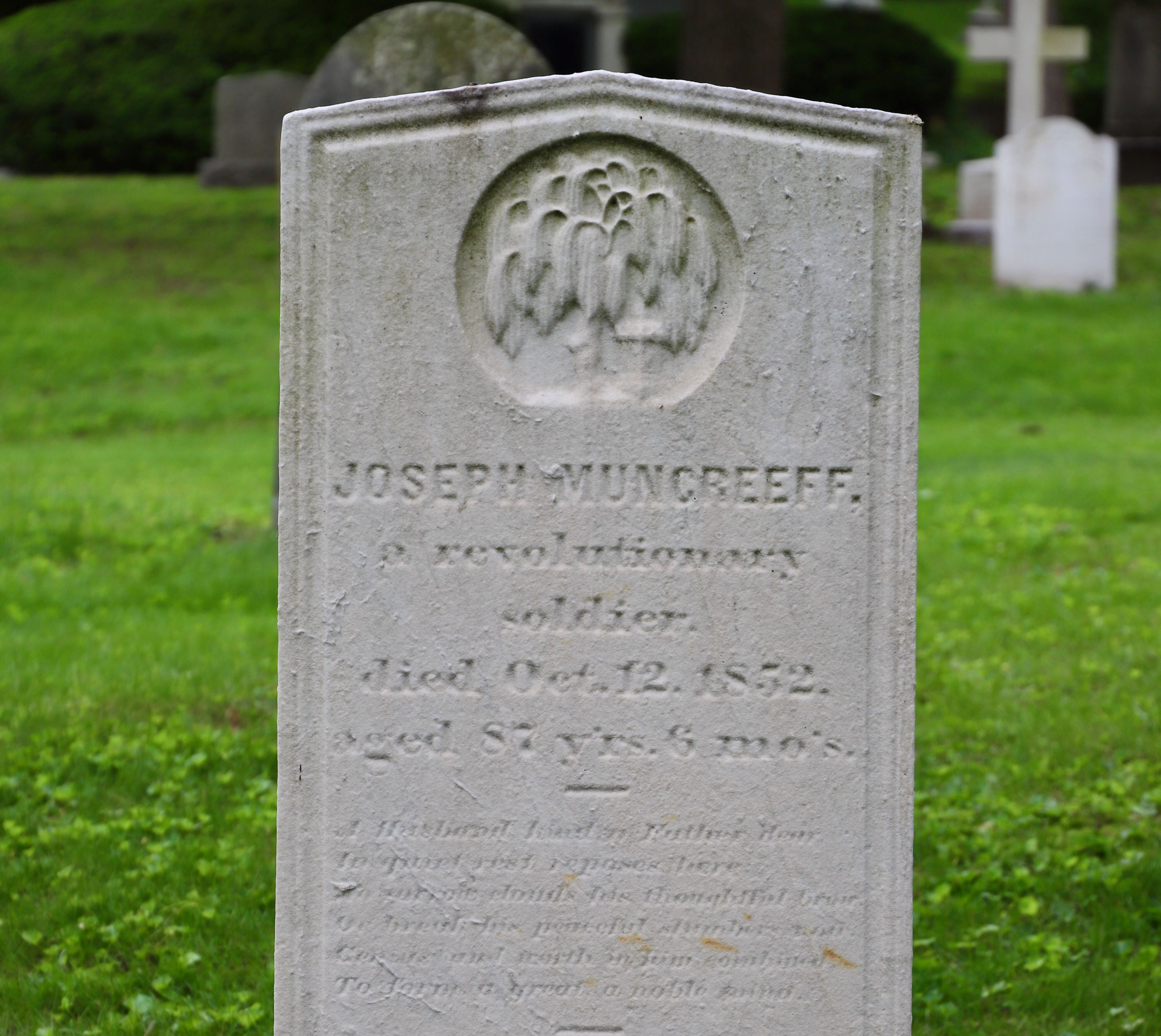
Joseph Muncreeff (1765- 1852)
Muncreeff was a ropemaker. In his pension application of 1818 Muncreeff testified that
“… in the War of the Revolution in the year 1779 I entered on board the Providence Frigate Commodore Whipple…I remained on board till she was taken by the enemy at the Siege of Charleston, was sent from thence in Cartel to Philadelphia, where I shipped on board the Dean Frigate [with]Captain Nicholson & remained on board ten months when she arrived at Boston where I was discharged & from her & entered on board the sloop of war Defence [with] Captain Evans, I remained on board till she was cast away & by reason of my reduced circumstances I stand in need of assistance from my Country being now fifty-three years of age.”
He is buried in Lot 1812 on Acanthus Path.
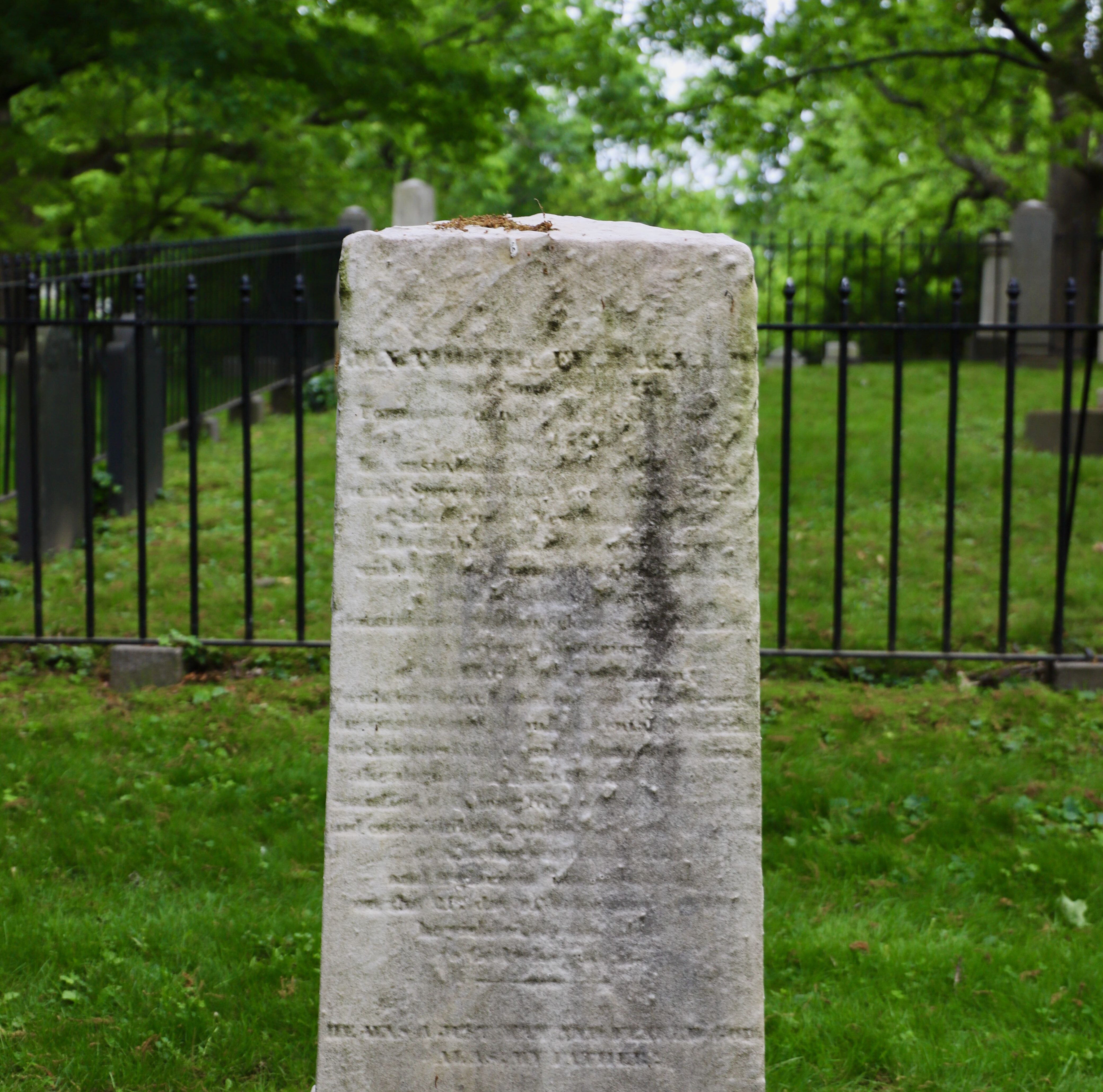
Major Timothy Farrar (1747-1849)
After graduating from Harvard in 1767 became a teacher. In 1870 he moved to New Ipswich, N.H. where, before the war he served as Town Clerk and Selectman.
During the war he was a Major in the N. H. state militia, though it is not clear where he fought. In 1775 he was appointed a judge in the court of Common Pleas in Hillsborough, N.H, and later served as a judge in the Superior Court of the state of New Hampshire. All-in-all he was a judge for 40 years.
Timothy Farrar lived to be 102. He is buried in Lot 1182 on Elder Path
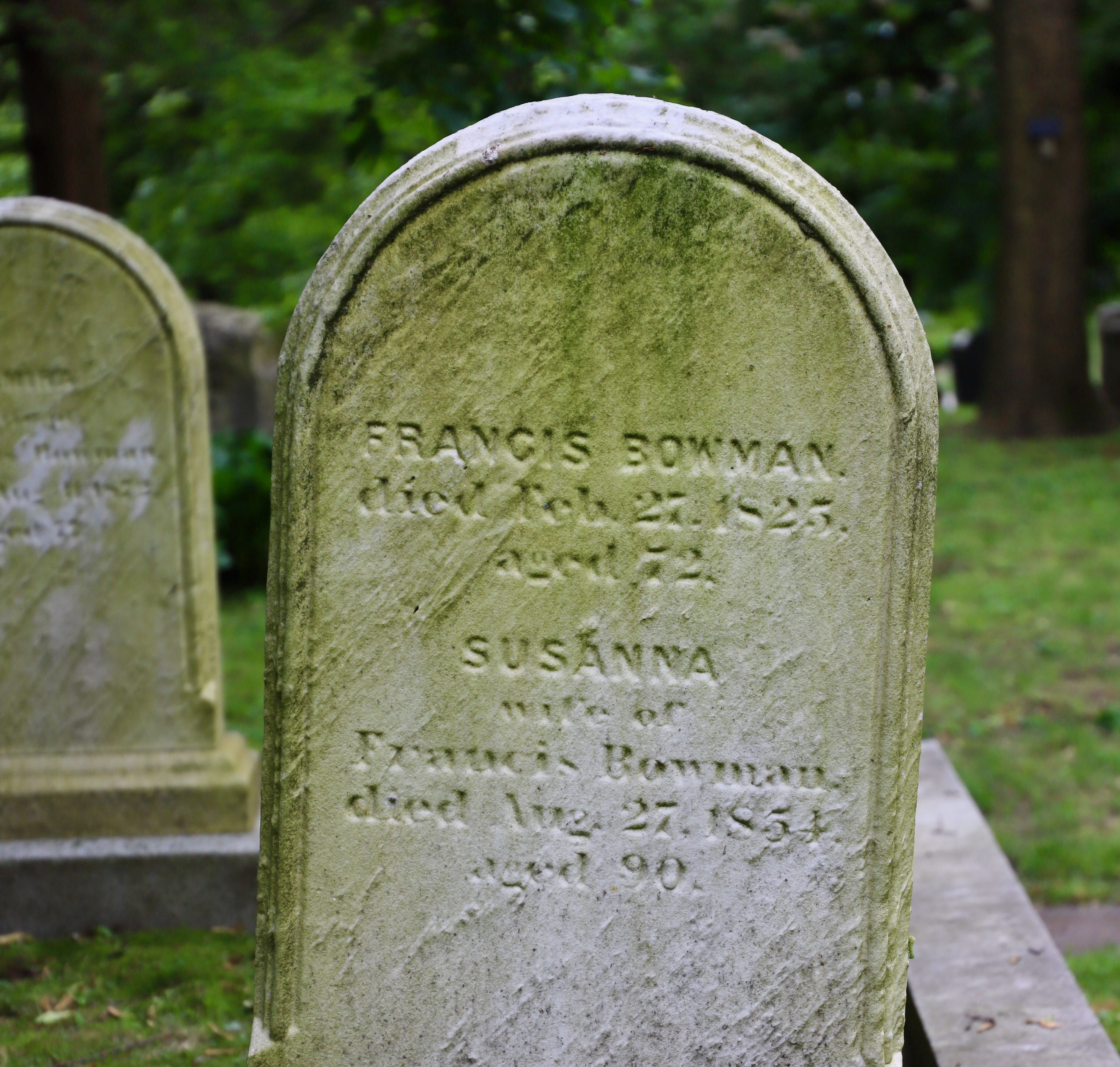
Francis Bowman (1752-1825)
After graduating from Harvard in 1767 he moved to New Ipswich. N. H. He served as a private in various Massachusetts Militia companies, beginning in 1775 with the militia at Cambridge.
He also served in Somerville and Roxbury and in 1777 on Canon Guard Duty in Lexington.
His body was reinterred at Mount Auburn Cemetery in 1865 in Lot 3391 on Mistletoe Path.
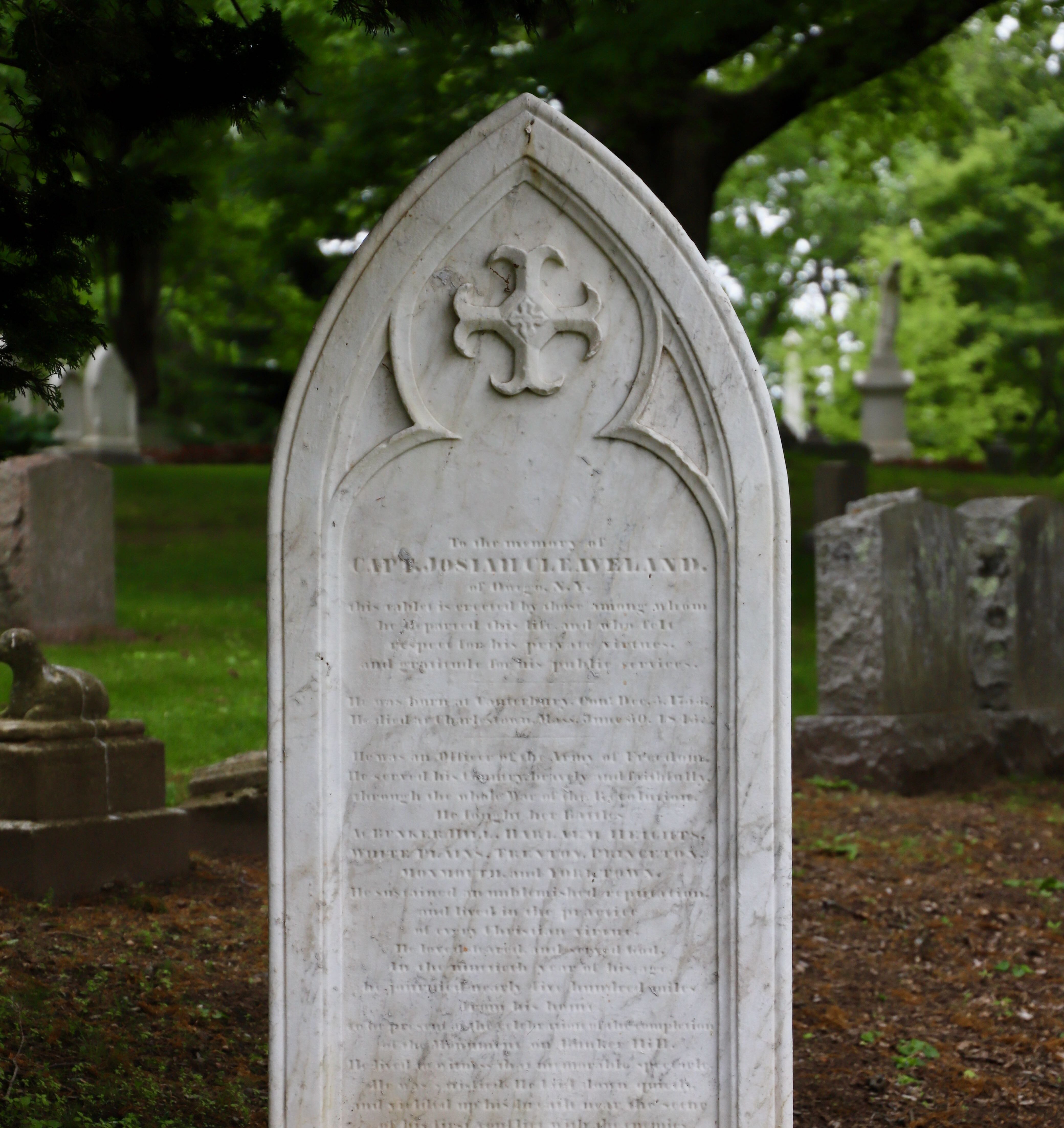
Capt. Josiah Cleaveland (1753-1843)
Cleaveland served at Bunker Hill, Harlem Heights, White Plains, Trenton, Princeton, Monmouth, and Yorktown. At the cornerstone celebration at Breeds Hill in 1824, he spoke with Lafayette. “Wanting his remains to be near Bunker Hill, Amos Lawrence provided space in his family lot.
Years later, another Lawrence needed space to bury his child. Cleaveland’s remains were reinterred in a public lot. Learning of this Cleaveland’s great-great-granddaughter (Mrs. Frances D. Wadhams of Wilkes-Barre, Pa), purchased a lot at Mount Auburn and had Cleaveland’s remains transferred to that lot.
He is buried in Lot 4143 on Lime Ave.
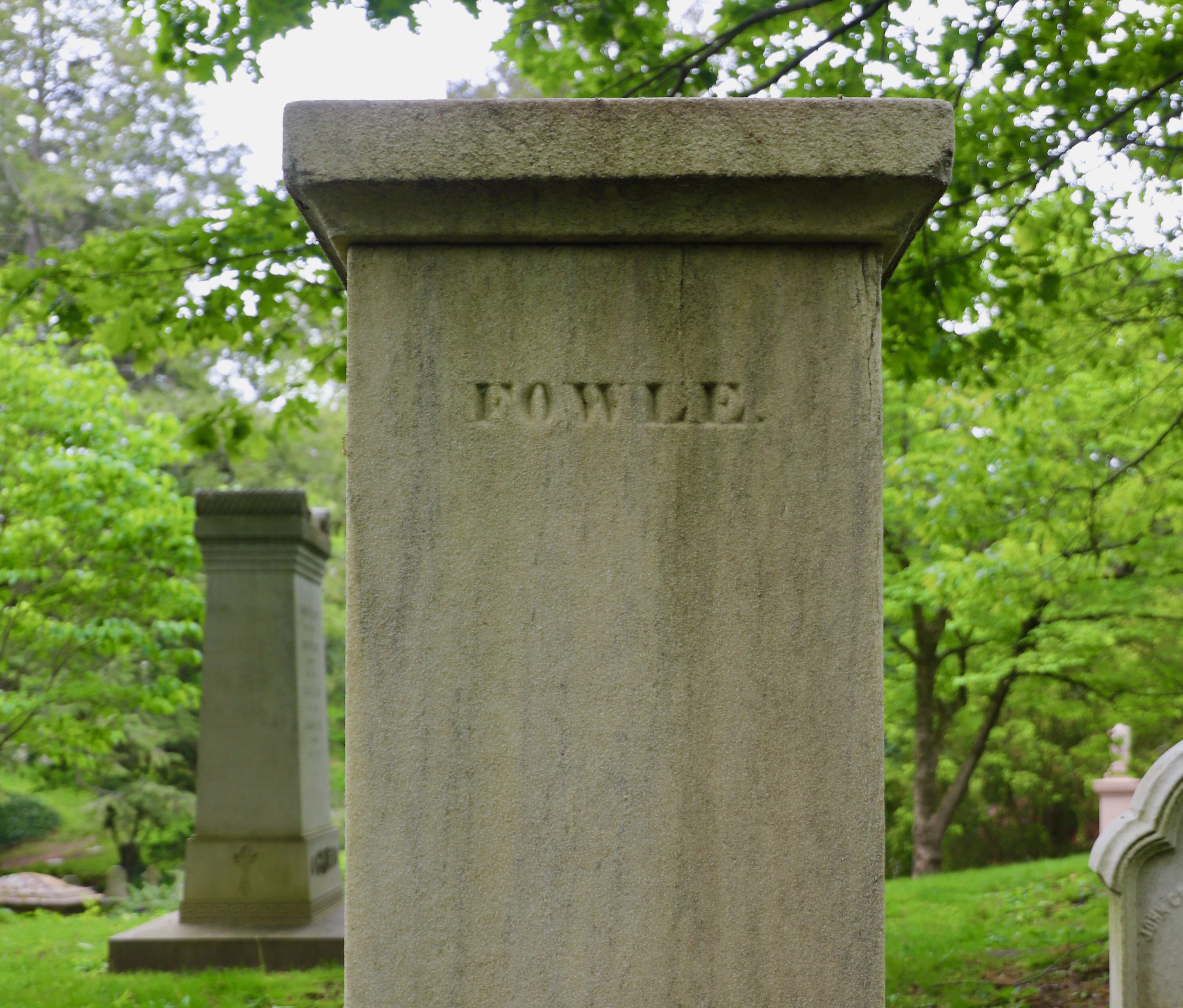
Capt. John Fowle (1756-1823)
Fowle was the son of a shoemaker in Watertown, MA. He served at various ranks during the War – Adjutant, Lieutenant, and Captain – with several regiments from 1777-1783.
In 1781 he was a member of Lafayette’s staff at the battle of Yorktown. After the war he became a Selectman in Watertown, and was an Original Member of the Society of Cincinnati which was founded in 1783 to commemorate the War.
He is buried in Lot 132 on Willow Ave.
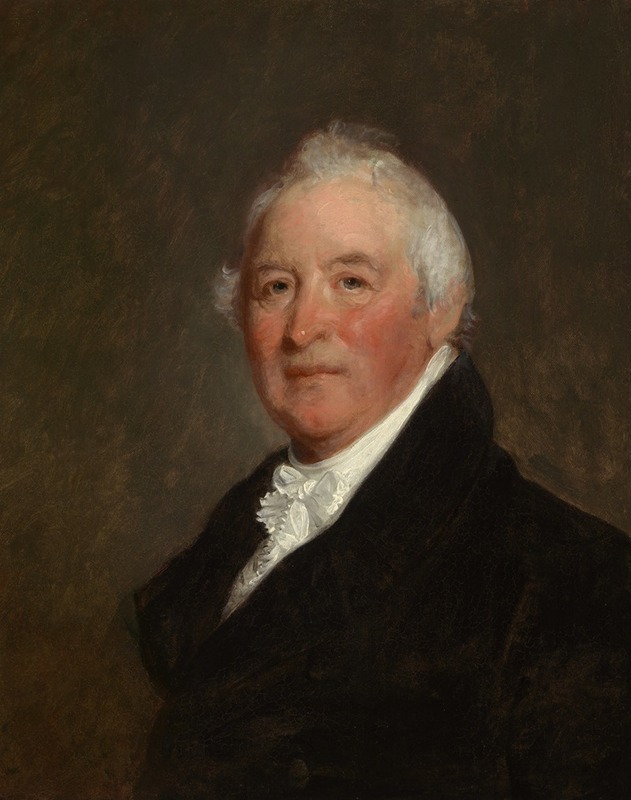
Gen. William H. Hull
His monument is a cenotaph (empty-tomb) atop the McLellan monument, erected by his daughter Eliza, who married Francis M. McLellan.
Having just been admitted to the bar in 1775, Hull joined the militia in Cambridge. He served throughout the war in major battles at White Plains, Trenton, Princeton and Saratoga, among others. He was promoted to the rank of Lieutenant Colonel in 1779. He also served in the War of 1812.
(Capt. Abraham Fuller Hull, 1786-1814 William Henry’s son, is also commemorated in the cenotaph at Lot 543 Beech Ave. He served in the War of 1812, during which he died in 1814. He is buried in Drumlin Hill Cemetery, Niagara Falls.)
The Cenotaph in located at Lot 123 on Poplar Ave.
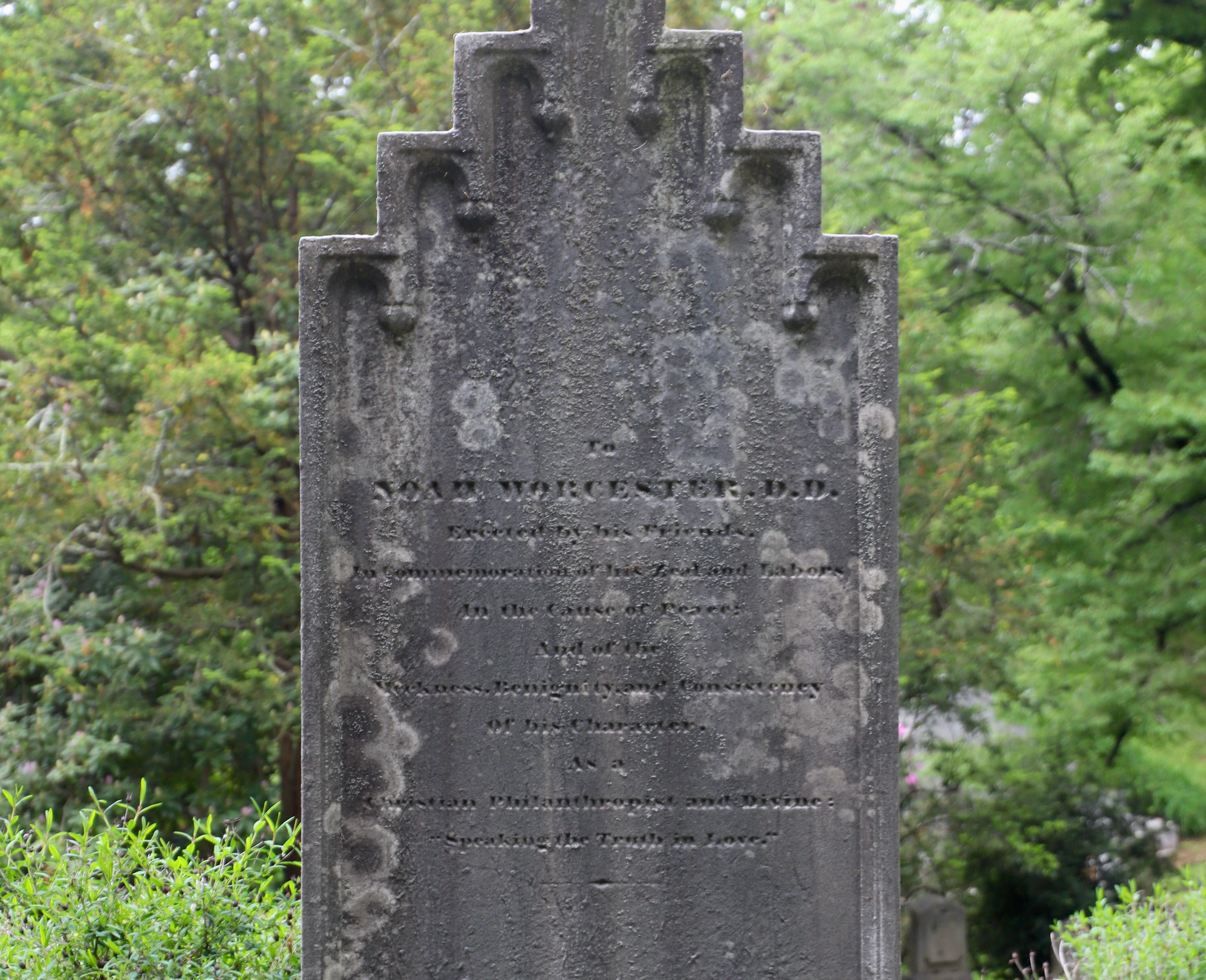
Rev. Noah Worcester (1758-1837)
At the age of 16, in the spring of 1775, Worcester enlisted in the army as a fifer. He was present at the battle of Bunker Hill. In 1777 he was Fife-Major at the battle of Bennington.
He became a theologian, pastor, teacher, and selectman in New Hampshire. By at least 1813 he was living in Brighton, MA. in where he was elected Postmaster.
He was originally buried in the Market St. Burying Ground in Brighton and reinterred in Mount Auburn in 1839 in Lot 724 on Walnut Avenue.
Community & Sacrifice
War is waged not only on battlefields but in the hearts of towns and families left behind. This group of veterans exemplifies how local communities sustained the war effort—manning wagons at Dorchester Heights, enduring the winter at Valley Forge, and leading hometown militias. After the Revolution, many returned home to serve again—as selectmen, judges, clerks, and civic leaders—helping to rebuild and govern the young republic. Their sacrifices—of time, health, and, in too many cases, comfort—reflect how the Revolution’s promise was built on the everyday bravery and continued public service of neighbors and kin.
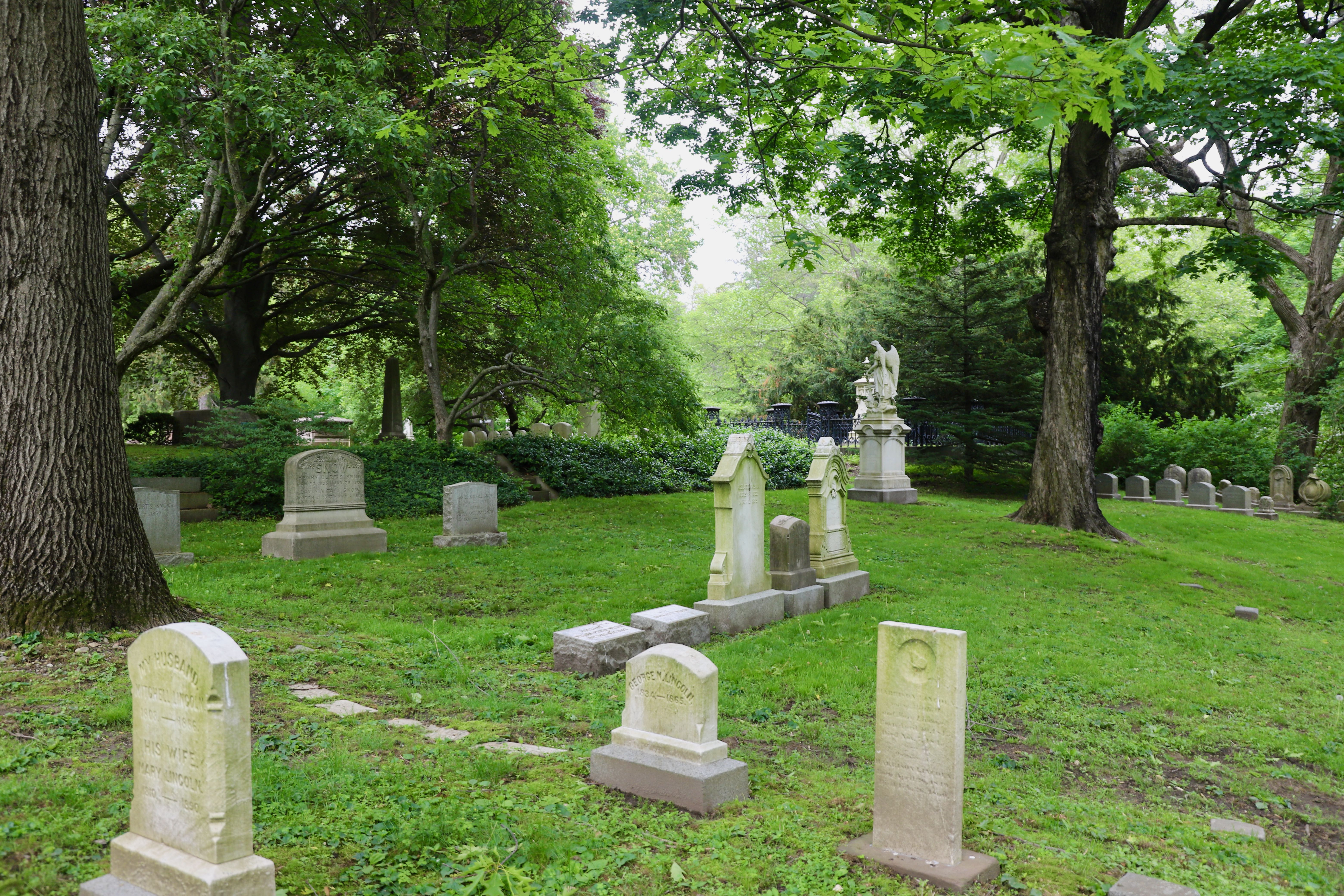
William Hagar (1749-1830)
Hagar Marched to Concord and Lexington Apr 19 1775 and served as a Waggoner at fortification of Dorchester Heights in 1776.
Originally interred in tomb 61 at St. Paul’s Church in Boston, he was later removed to his son-in-law Eleazer Nichols’ lot 1370 at Mount Auburn.
His gravesite is currently unmarked.
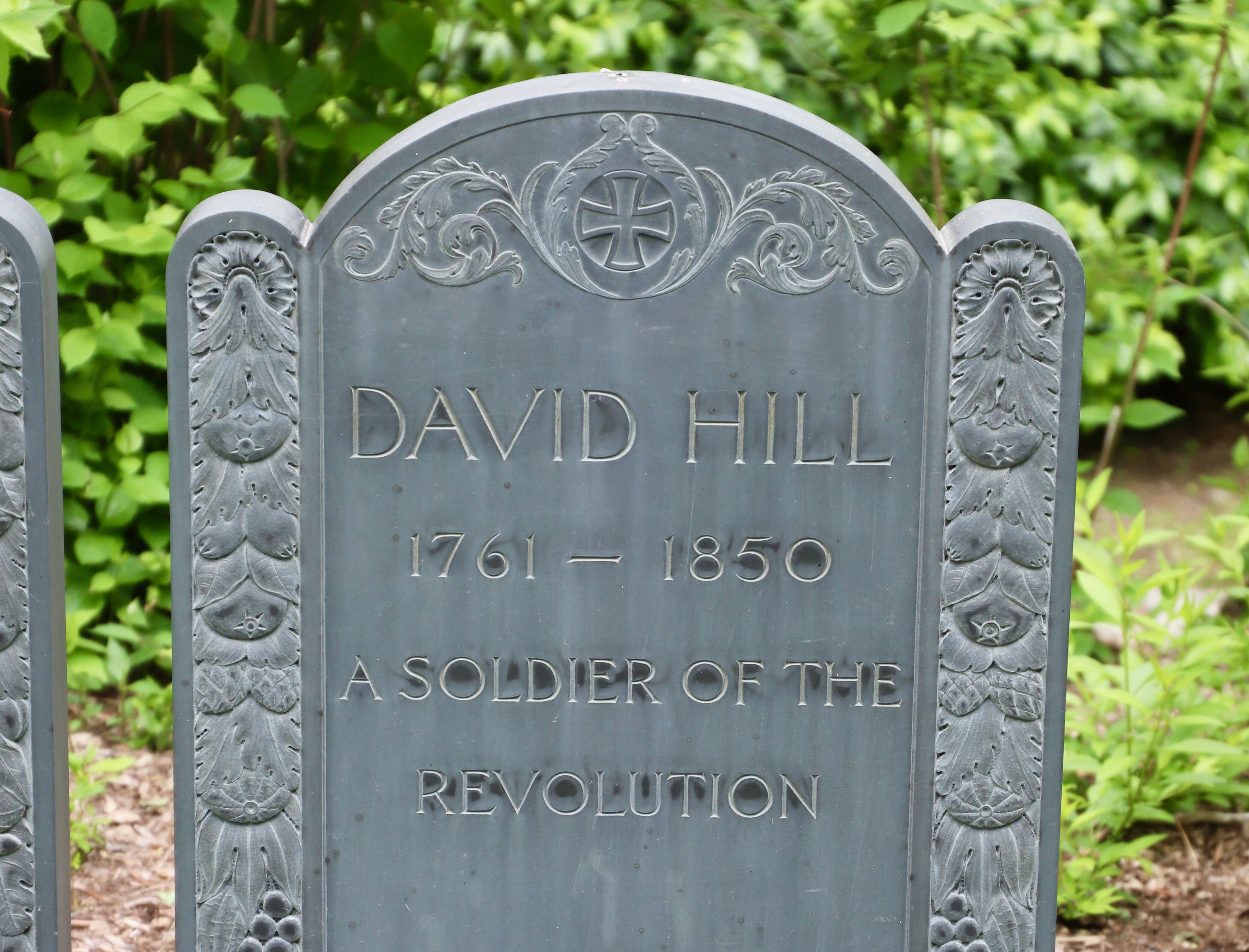
David H. Hill (1761-1850)
Hill bravely fought at Valley Forge from 1779-1780 and was a Private at Morristown, NJ from 1777-1780.
His daughter Elizabeth Lydia married Charles Leonard Coolidge. She had her father’s remains reinterred in the Coolidge Lot 1888 on Elm Avenue..
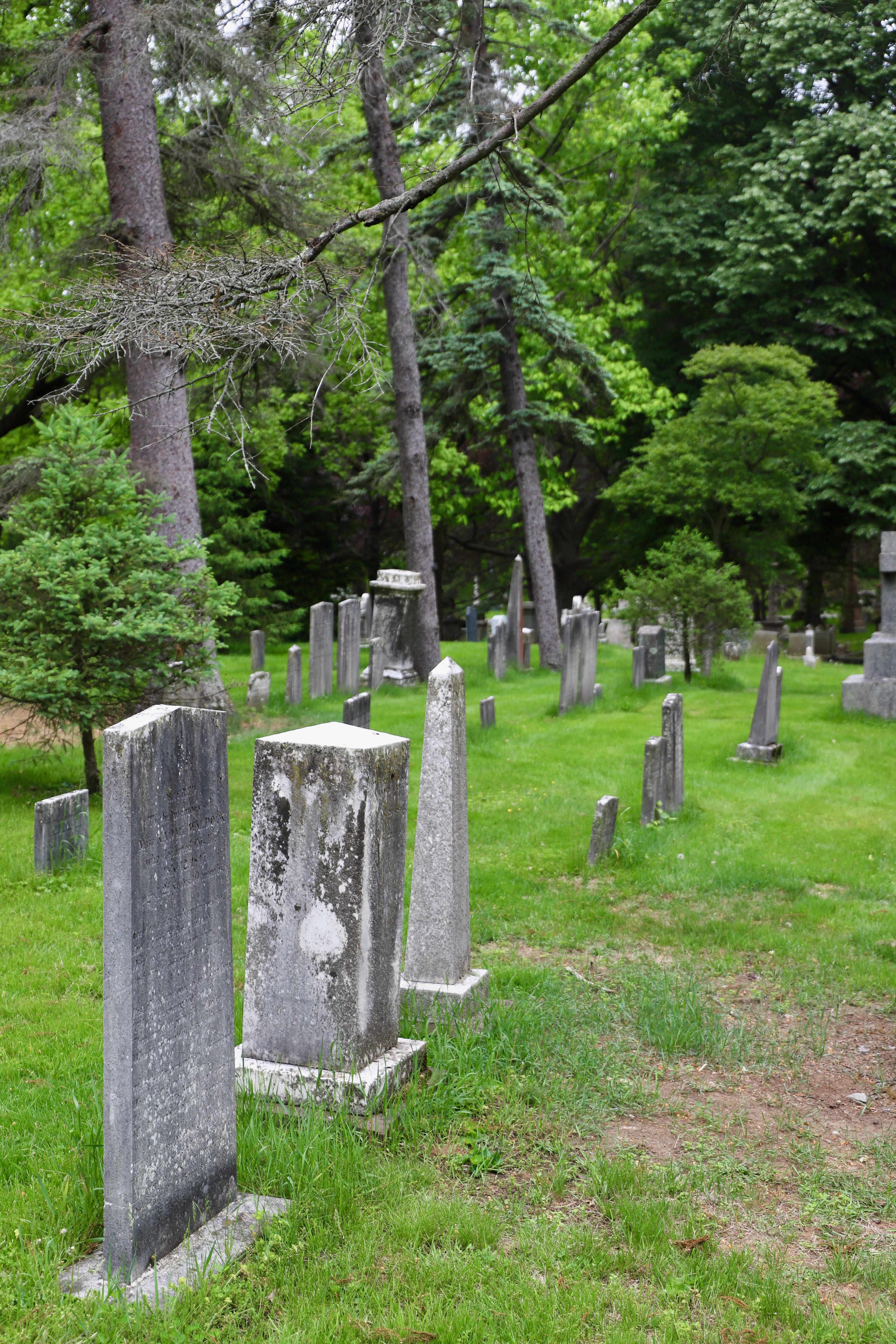
Thomas Wallcut (1758-1840)
Wallcut served as a steward and wardmaster at a military hospital in Albany, N.Y. during the war. After the war, in he became an engrossing clerk in the Massachusetts State House, a position he held for 40 years. He also became one of the founders of, and first secretary of, the Massachusetts Historical Society.
Earlier in his life he had invested in a real estate deal in Ohio which he was subsequently forced to sell for the income. Becoming impoverished, he died at the McLean Asylum (Now McLean Hospital) at the age of 82.
He is buried in Lot 108 in the St. James Public Lot at Mount Auburn Cemetery.
Why Were So Many Revolutionary War Veterans Reinterred at Mount Auburn Cemetery?
During the early 19th century, rapidly growing cities like Boston faced overcrowded churchyards, sanitation concerns, and urban redevelopment pressures. Mount Auburn’s “garden cemetery” model offered a serene, park‑like alternative—so many people, including Revolutionary veterans (many of whom had died before the consecration of Mount Auburn), were moved from cramped urban burial grounds into its landscaped setting.
The practice of reinterring remains during this period solved a number of problems for the citizens of Boston, some practical and some sentimental.
- Alleviated public health fears: Decaying remains in densely used city plots raised concerns about miasma and groundwater contamination.
- Created dignified memorial space: Families sought to commemorate their dead in a more picturesque, permanent setting than the crowded and unkempt yards of the old burying grounds of Boston.
- Reflected changing attitudes: The rural cemetery movement (starting with Mount Auburn in 1831) aligned with romantic ideals of nature, contemplation, and moral uplift–philosophical ideas that were becoming more popular in the burgeoning Victorian Era.
- Accommodated urban growth: As streets and buildings expanded in downtown Boston, older burial grounds were cleared or repurposed—relocating remains became common for families seeking to maintain their loved ones' graves.

A Revolutionary Legacy
“Paul Revere’s Ride” by Longfellow

Henry W. Longfellow’s (buried on Indian Ridge Path) famous poem Paul Revere’s Ride (published 1860) dramatizes the midnight alarm that helped trigger the Revolution. It opens with the now-iconic lines “Listen, my children, and you shall hear / Of the midnight ride of Paul Revere” and vividly describes Revere racing by lantern signal (“one if by land, and two if by sea”) to warn that British troops were coming.
Longfellow was writing on the eve of the Civil War, intending to inspire unity by recalling the Revolution’s ideals. His narrative turns Revere’s ride into a stirring legend: for example, the poem’s closing verse speaks of the “cry of defiance and not of fear” that will “echo forevermore” as Revere calls the countryfolk to arms (nps.gov). The result was that Paul Revere’s Ride became so successful that modern readers no longer remember it as a poem but as a national legend.
Longfellow “turned the singular character of Paul Revere into an icon of a unified patriotic past” (nps.gov). To this day, even people who’ve never read the whole poem often recognize its opening lines and imagery, as it shapes how many Americans picture the Revolution.
Paul Revere’s Grandsons in the Civil War
Paul Revere’s own family continued the martial tradition in the 19th century. Two of his grandsons joined the Union cause and are buried together in a Revere family plot on Walnut Ave. at Mount Auburn Cemetery.
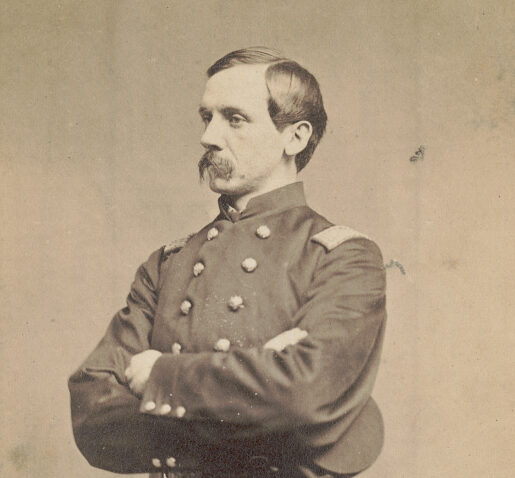
Paul Joseph Revere (1832–1863)
Grandson of the Revolutionary hero, he graduated from Harvard in 1852 and entered military service in 1861 as a Major in the 20th Massachusetts Volunteer Infantry. He served as aide to General Charles Sumner and was later promoted to lieutenant-colonel. In July 1863 he commanded his regiment at Gettysburg, where he was mortally wounded on July 3.
Paul Joseph Revere died on July 4, 1863, and his body was brought home for burial at Mount Auburn Cemetery.

Dr. Edward H.R. Revere (1827–1862)
An older brother of Paul Joseph, Edward Revere earned his M.D. from Harvard and became Assistant Surgeon of the 20th Massachusetts.
He fought alongside his brother in the early war. On September 17, 1862, at the Battle of Antietam he was tending wounded men on the field when he himself was shot and killed.
Edward Revere, too, was returned to Boston and interred in the family plot at Mount Auburn.
Footnotes:
Adapted from the research of Mount Auburn Volunteers, Bill McEvoy and Kathleen Fox. Additional research and writing by Education & Digital Content Manager, Corinne Elicona.
Top Image: The second of four engravings by Amos Doolittle from 1775, depicting the British entering Concord.
